Dutch Barn
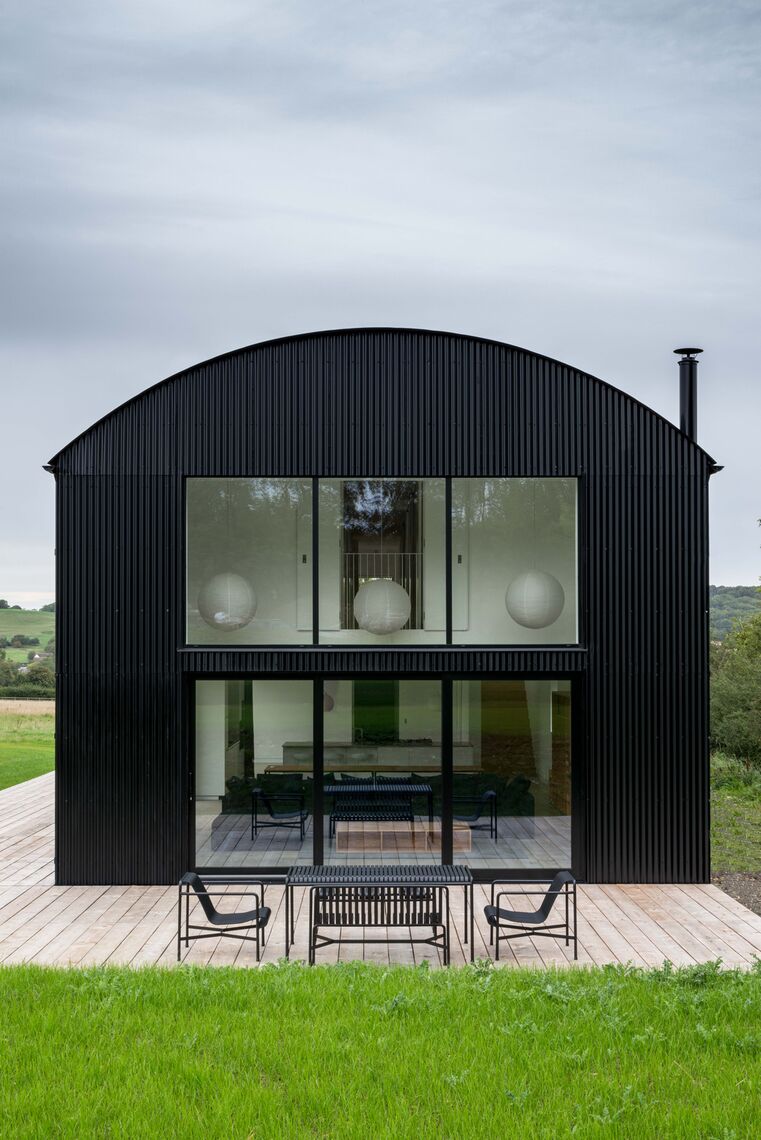
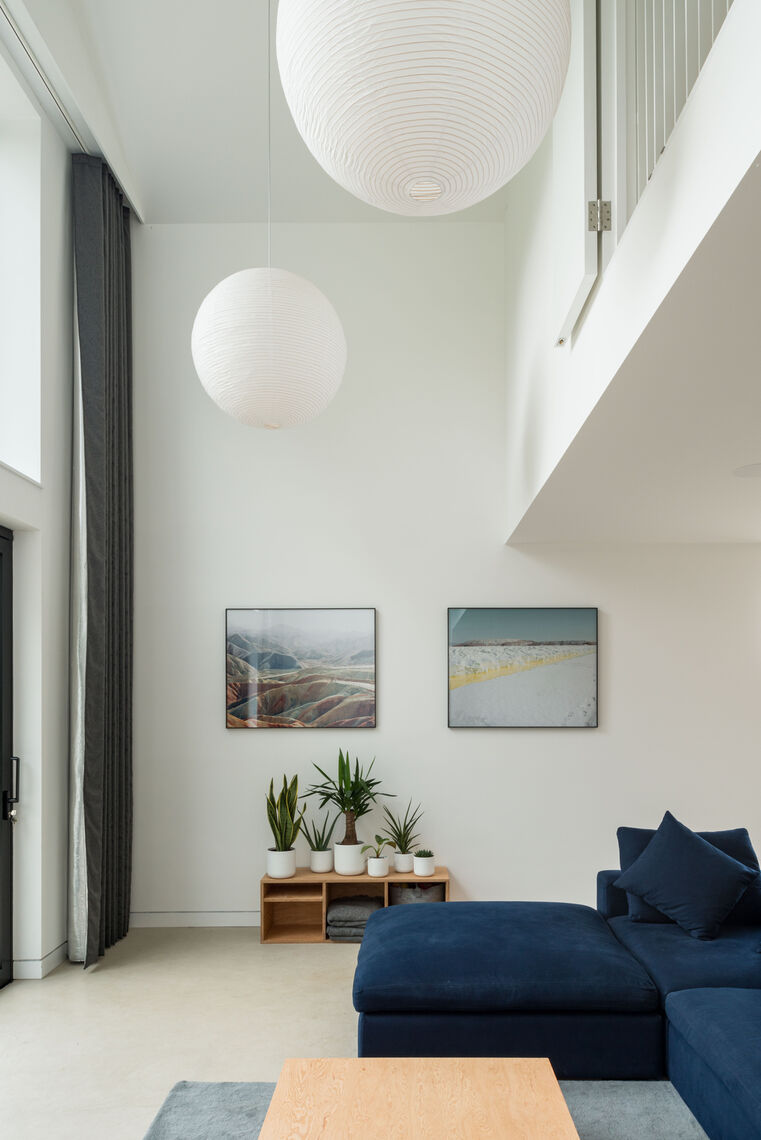
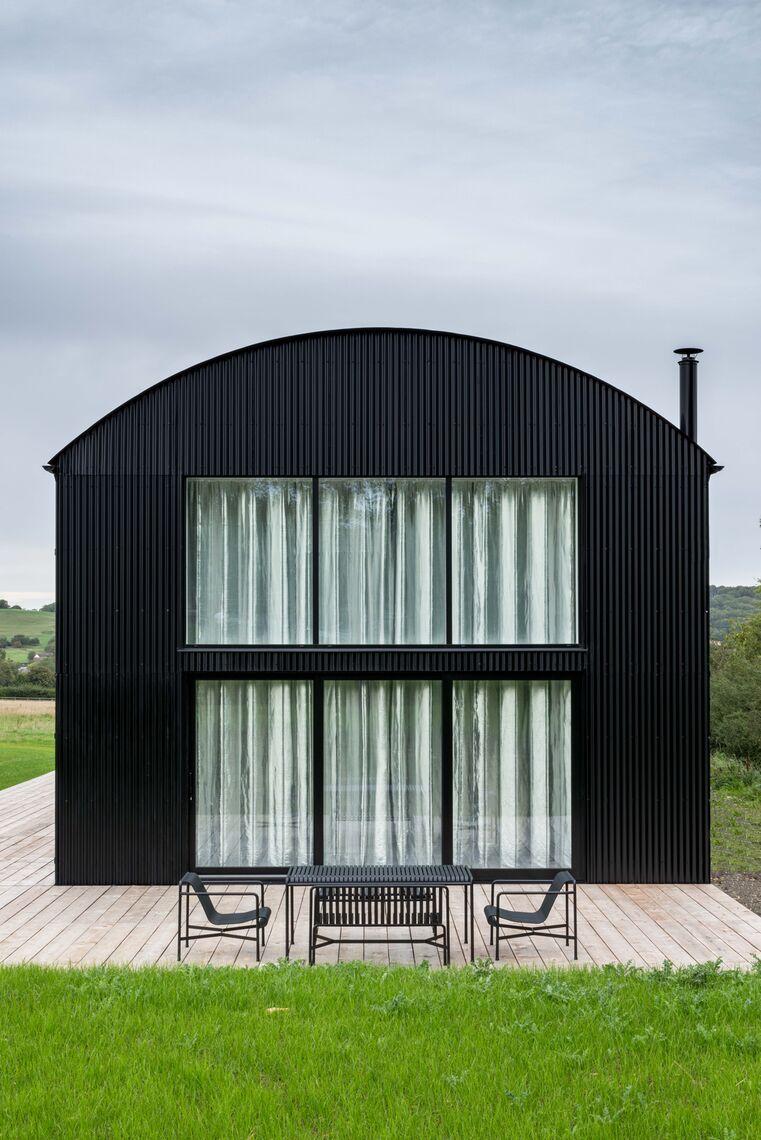
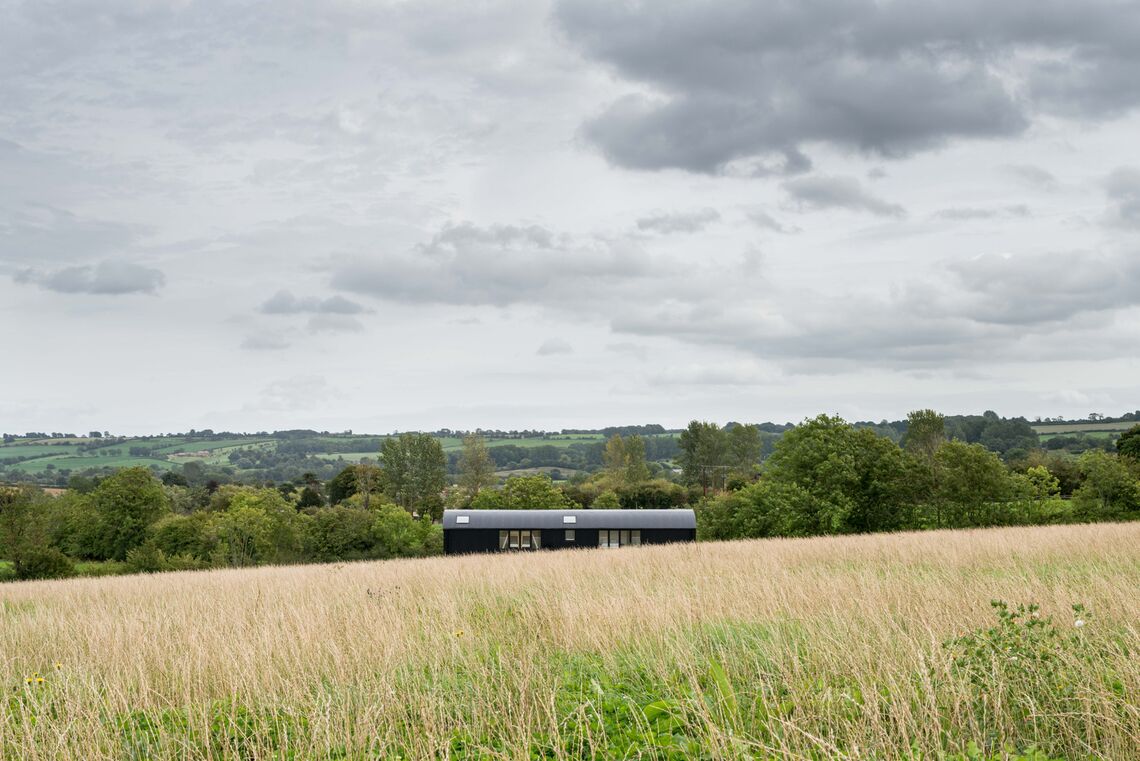
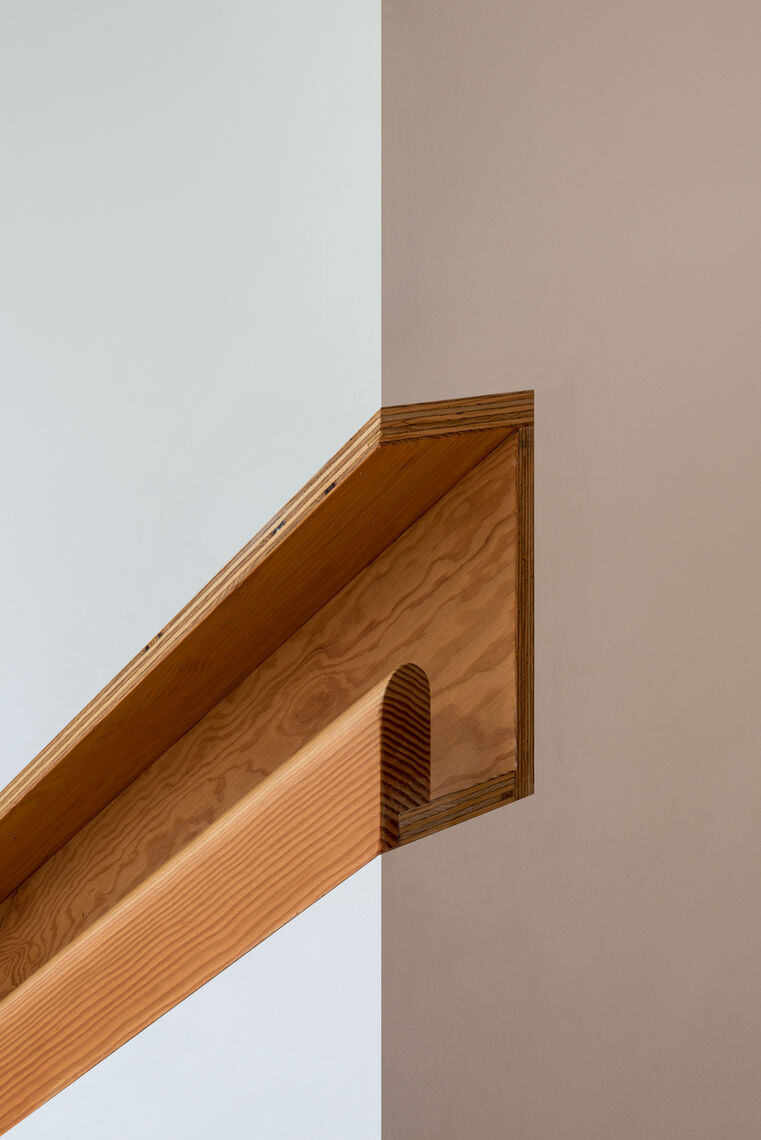
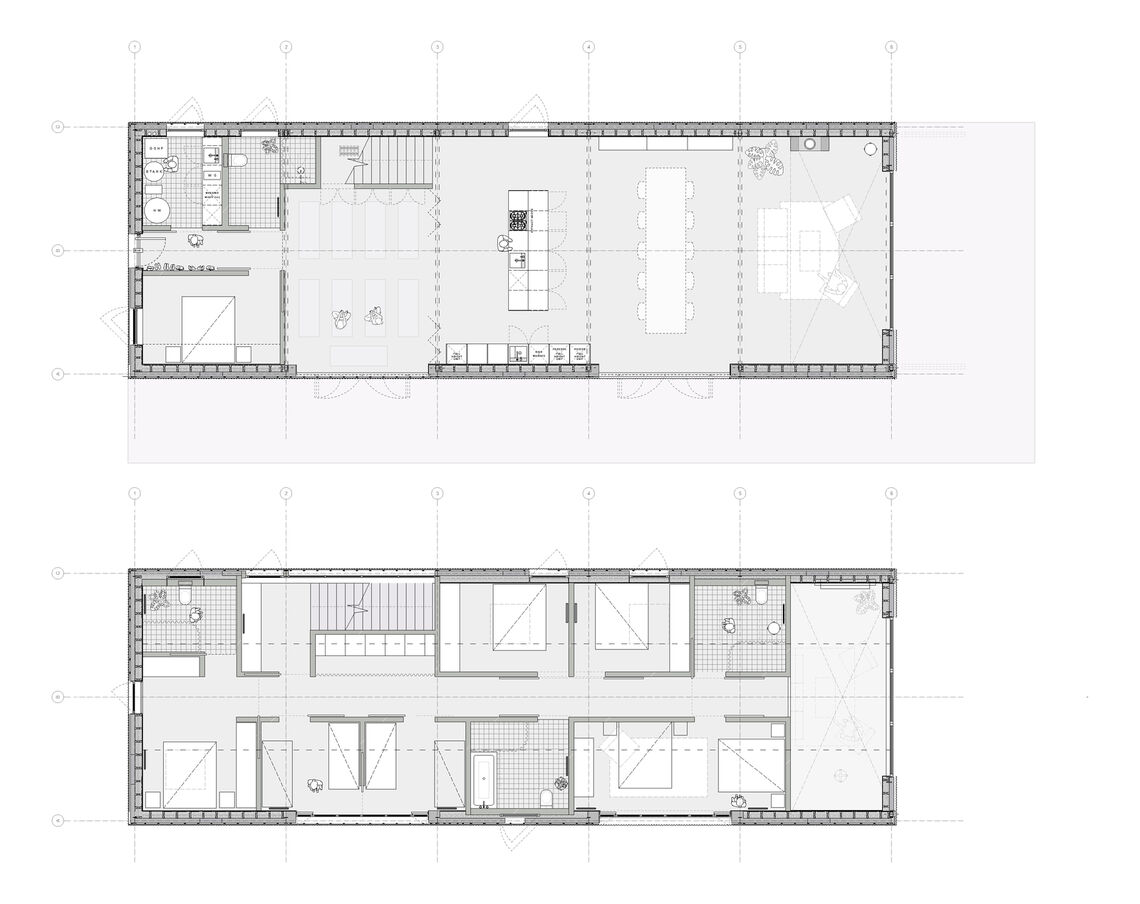
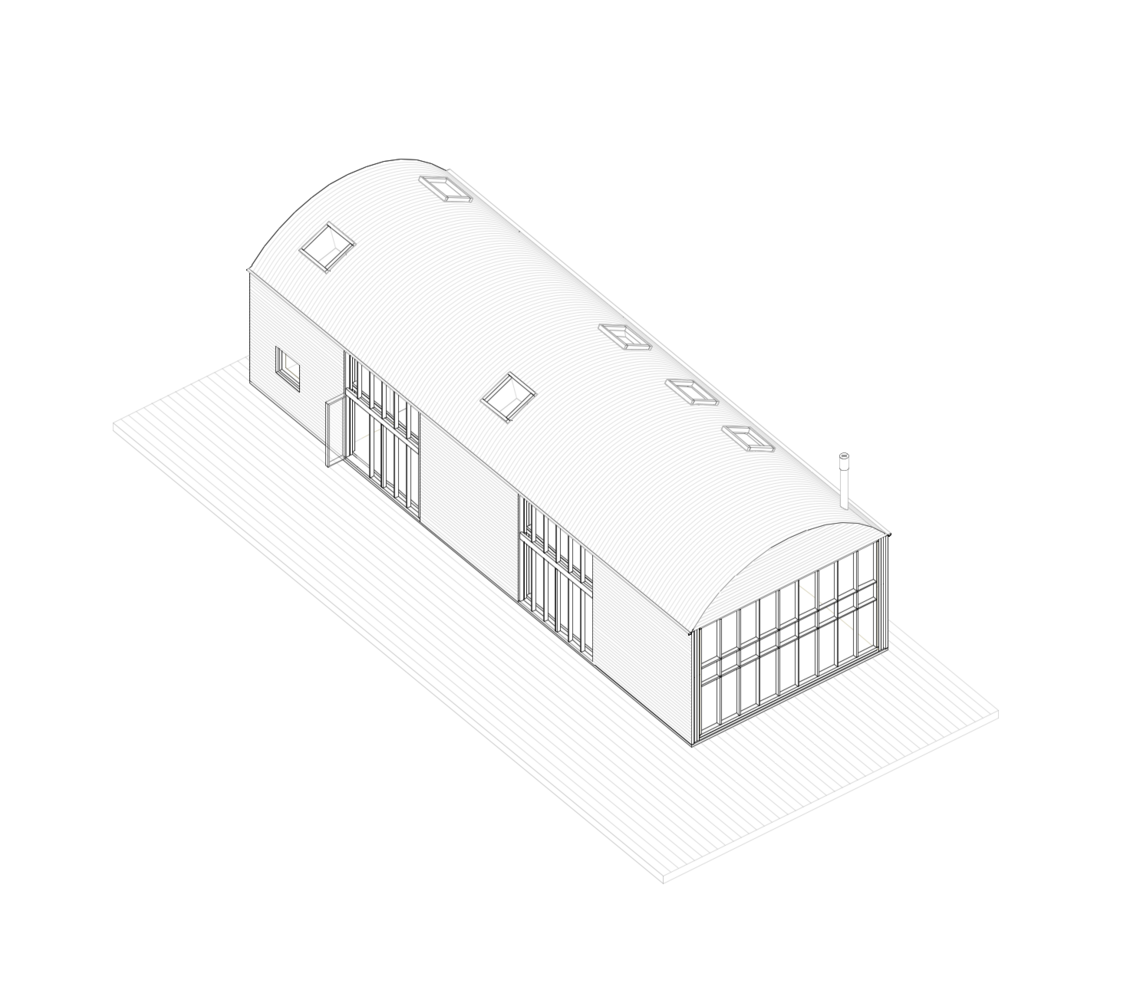
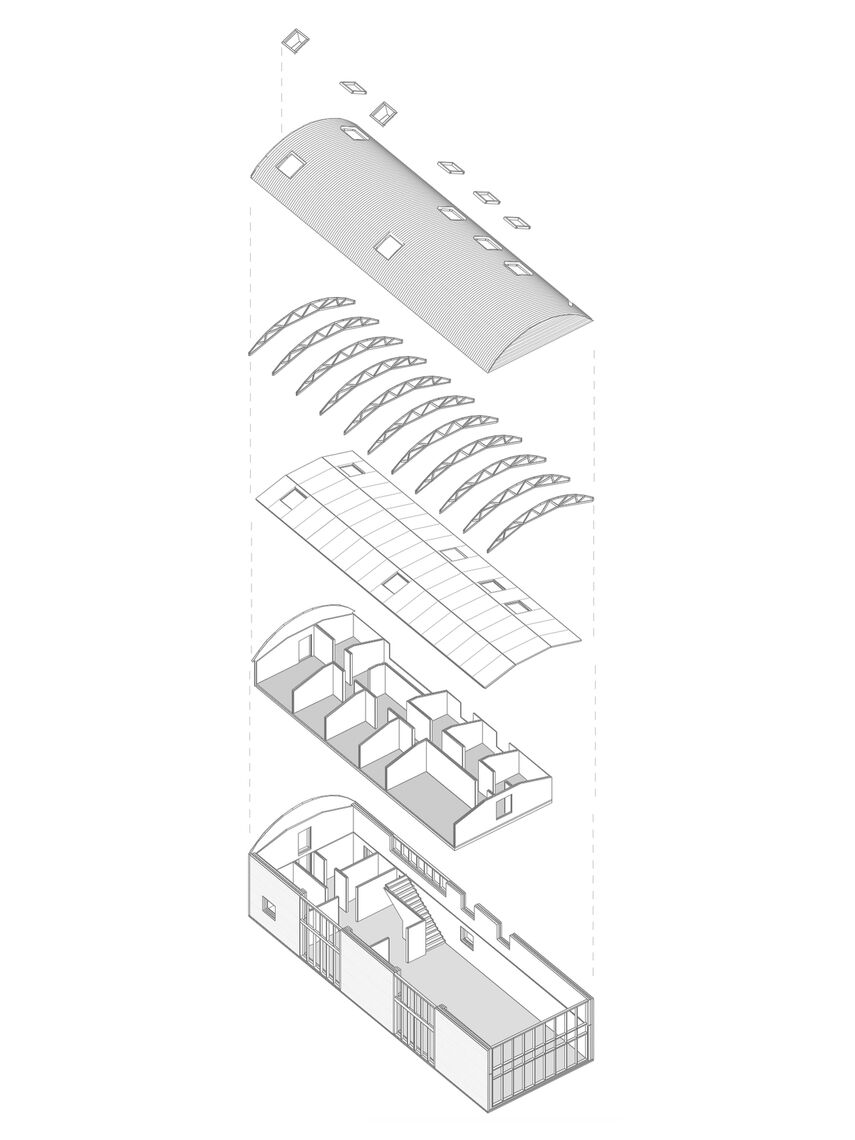
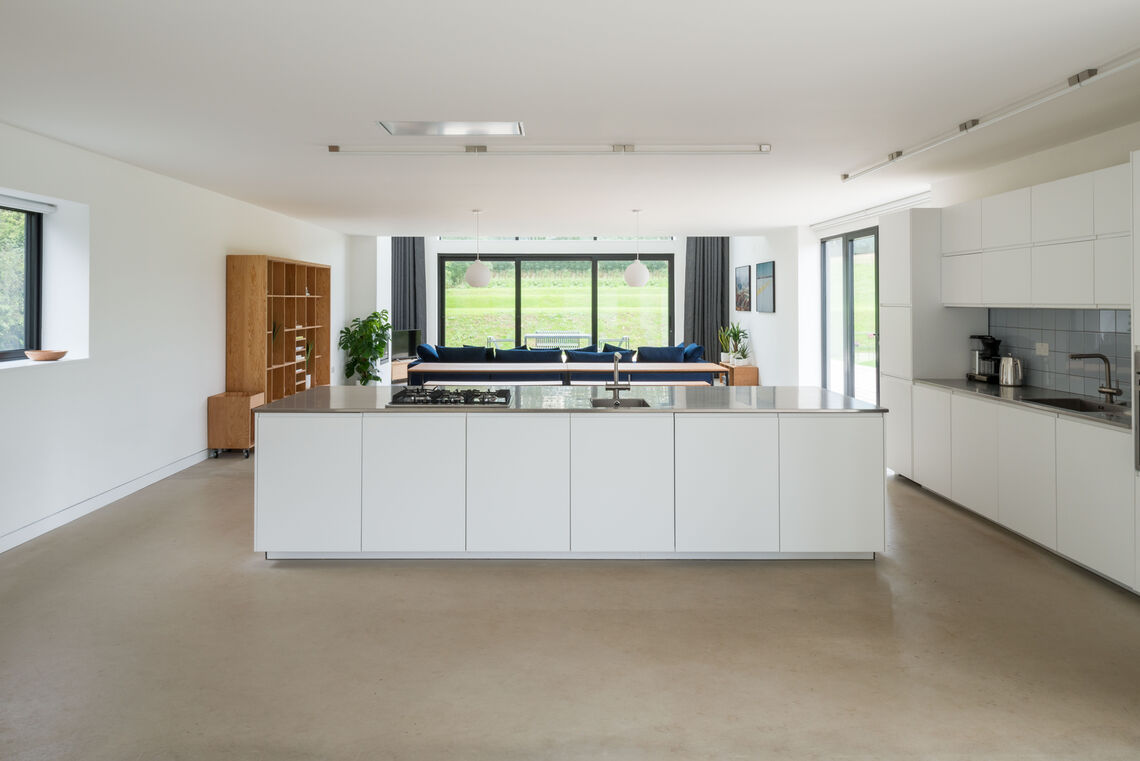
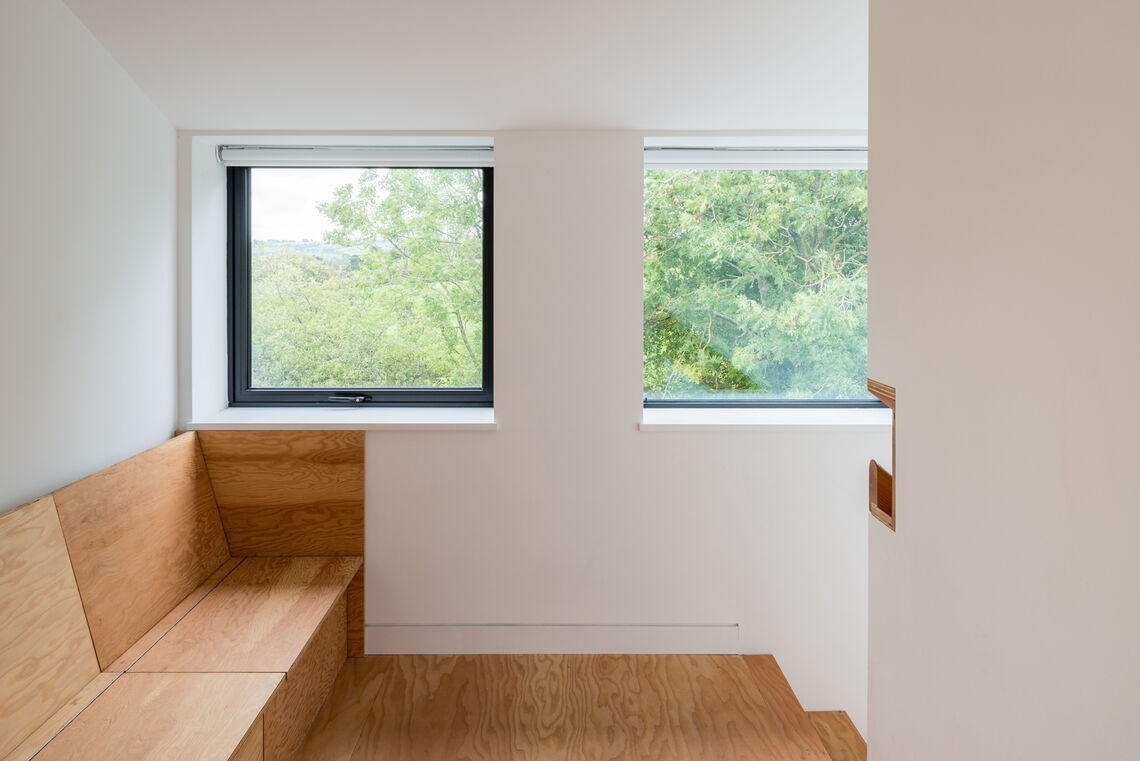
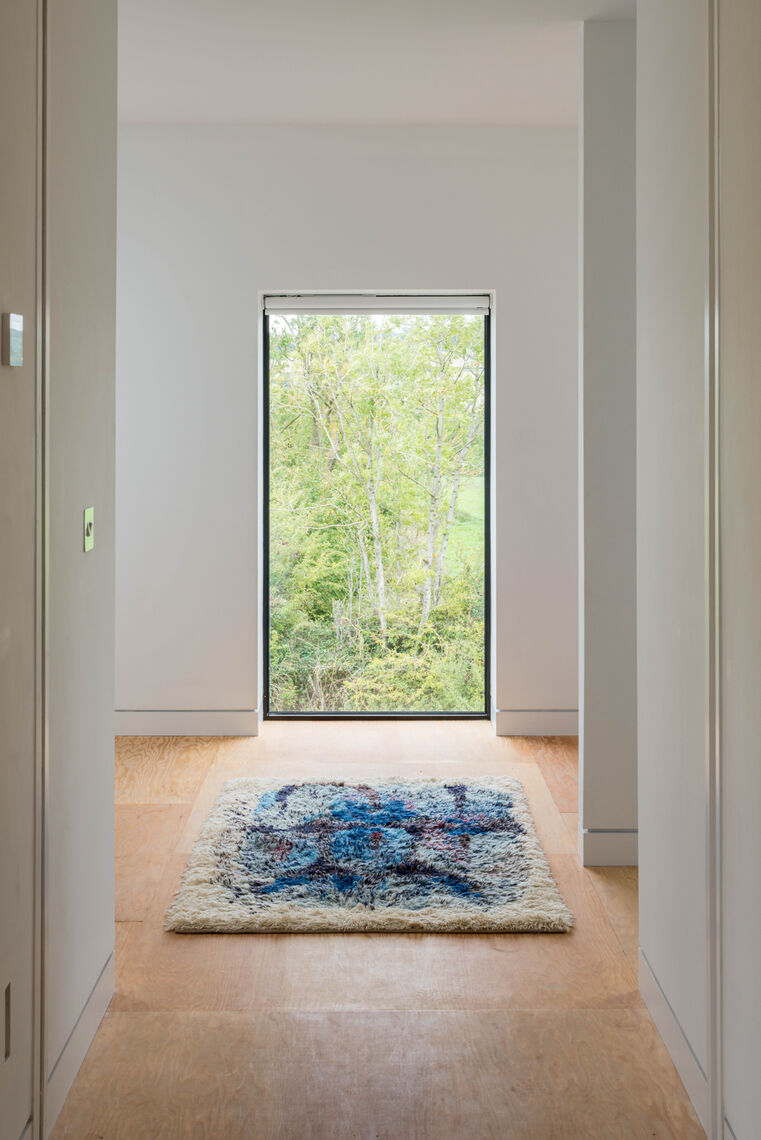
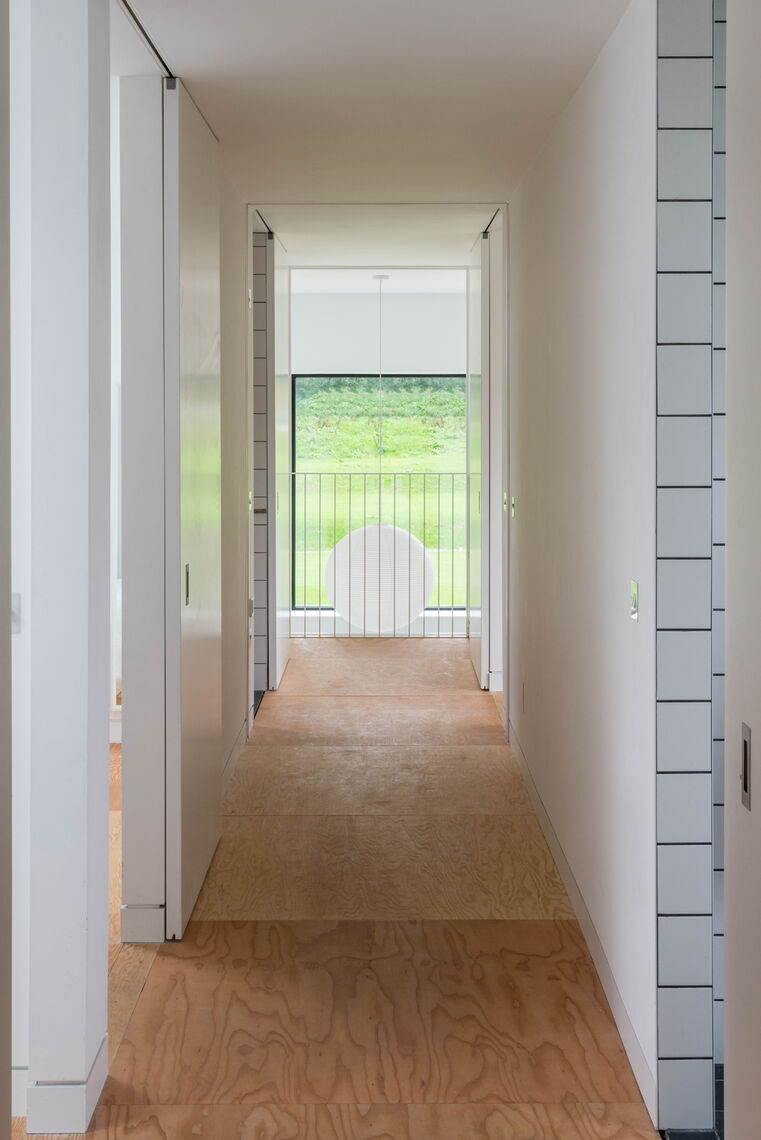
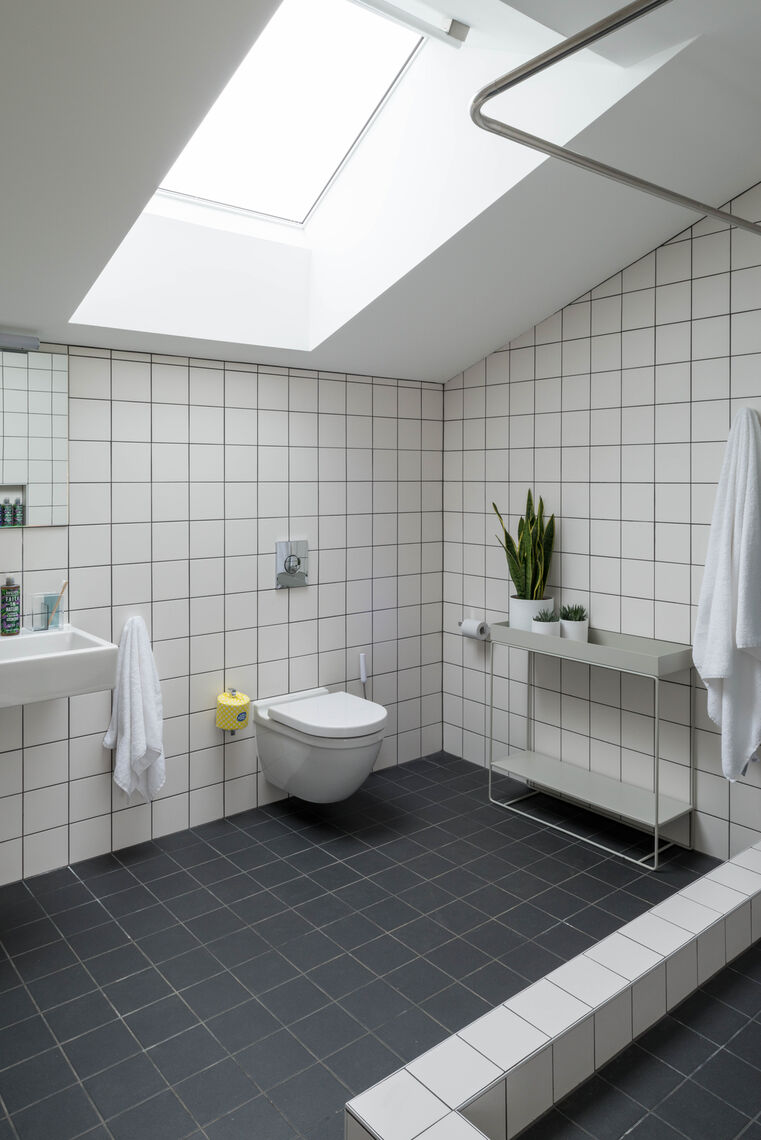
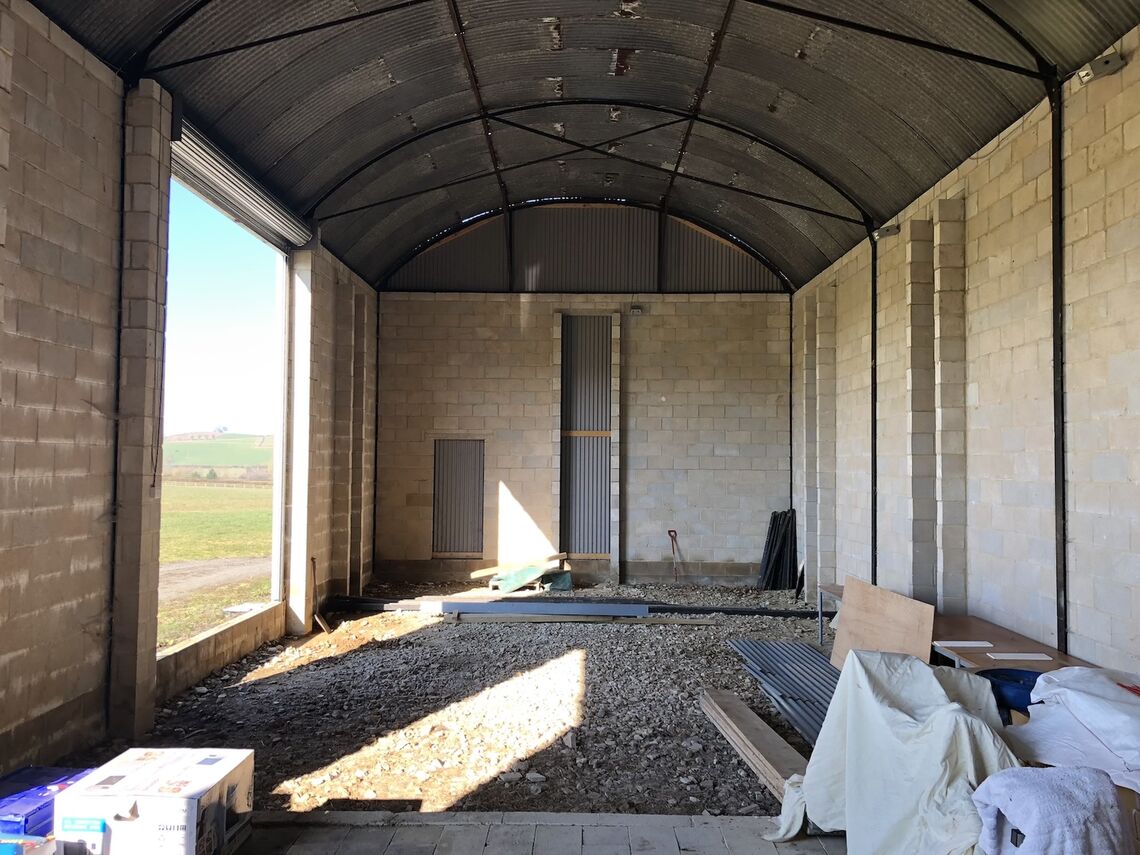
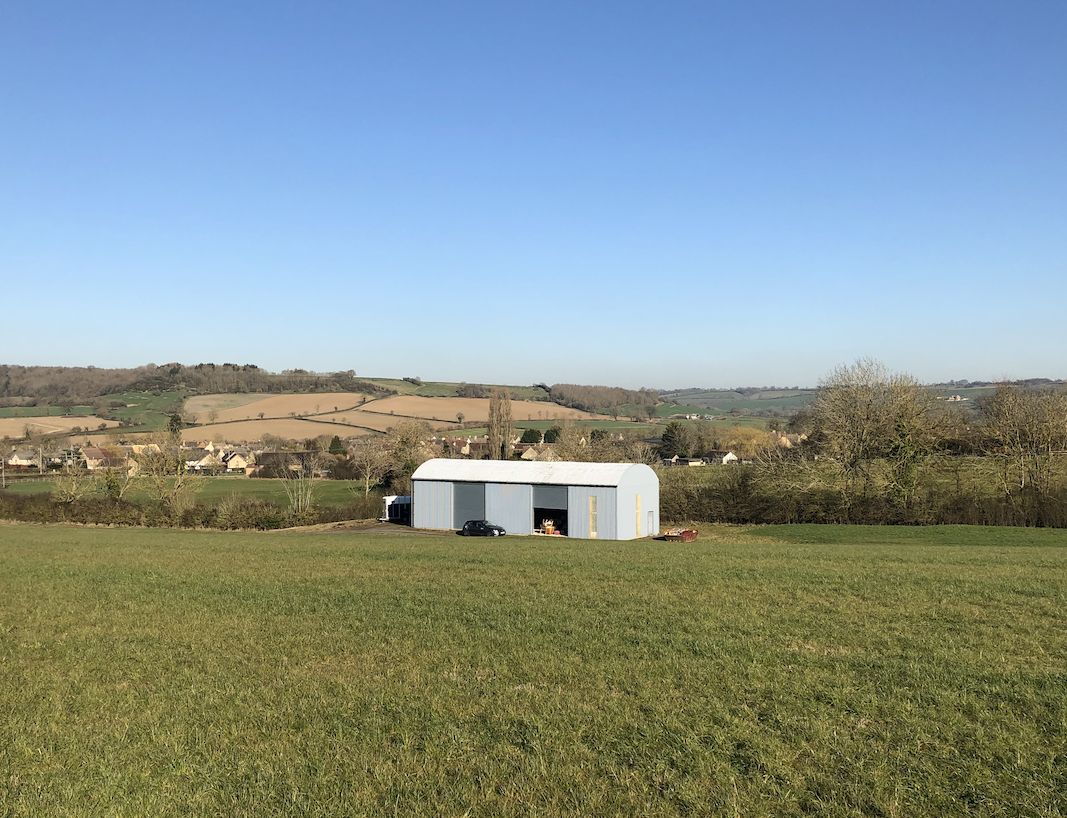
Designed and delivered for Turner Works and Accept & Proceed, the Dutch Barn is a conversion of an existing agricultural shed into six-bedroomed accommodation located within an Area of Outstanding Natural Beauty in the Cotswolds.
Initiation of the project centred on a brief to create a place for creative retreat, both as a source of rest and relaxation for families and equally a location for reflection and pause to consider life outside of the city's perpetual flow. The site is set back on a broad and lush expanse of meadow, bordered distantly by country hedgerows and established treelines.
The layout for sleeping accommodation was conceived as cellular arrangement accessed via a central hallway reminiscent of a more monastic typology. The hallway is left open at either end of the North-South axis, framing views both along the passageway and out into the landscape to the north, and opening into a double height space above the living room to the south.
The ground floor is configured to allow for as much flexibility of use as possible, containing the kitchen dining and living space as a single open plan space and generating freedom to furnish and inhabit these spaces as use dictates. A multifunctional space is given over to one end of the open plan space, a metallic and sound absorbent textile fabric curtain allows for this area to be closed off from the main volume creating an enclosed space for cinema projection use, exercise, yoga sessions, or other gatherings.
The original shed building, relocated from elsewhere and reconstructed for a new use as a tractor garage, rather than it's original purpose as a 'dutch' haybale store, had a past history of multiple planning permissions, including the conversion of the property into two holiday cottages. Deep foundations had already been installed on the initial relocation of the structure, and within the fading blue corrugated steel shell blockwork walls had been erected, power and mains water had also already been extended to the site.
Working within the original fabric of the structures as far as possible, the design made use of the existing blockwork, repositioning openings only where essential for the new design. Existing steel elements were not sufficiently strong to carry new floor and roof loads, and were supplemented by new post and beam portal frames at matching centres, replicating the existing rhythm of bays and openings; two sets of full height roller shutters doors existed to the front of the building permitting access for agricultural vehicles. The roller shutters were removed and full height glazing installed in their place.
Forty custom designed lightweight timber trusses were then installed over the top of the existing blockwork walls, now stabilised by new steel framing. Onto which a new highly insulated roof was constructed, skylights punctuate the vaulted surface over bedrooms and bathrooms.
The south gable end of the house is granted a far broader and taller glazing assembly and provided with a fully opening sliding door section to the lower ground floor, so allowing the space to open out onto a terrace space as a continuation of the internal floor. The double height space allows for circulation of air between the floors and affords interaction between the upper level and below via a Juliette balcony overlooking the volume, equipped with shutters to close off the opening.
Externally, the original corrugated metal sheeting has been replaced in a black finish, recalling the features of other dark painted barn structures visible in and around the locality.
The property utilises a Ground source heat pump to minimise it's long term carbon footprint. Readily available materials are used to finish the interior; matte varnished plywood, cement screed and painted plasterboard are used to simple but unpretentious effect as a backdrop to the activities within.
Photos by French & Tye